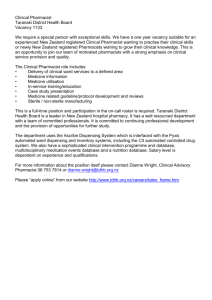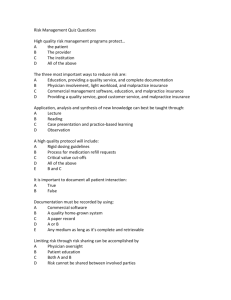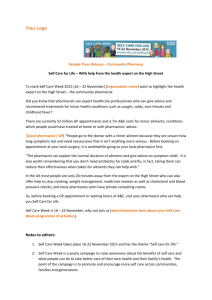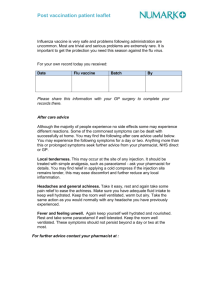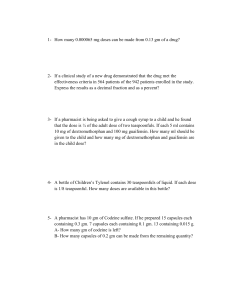Patient Safety in Rural Settings Venous Thromboembolism Overview: Why Talk About DVT?
advertisement
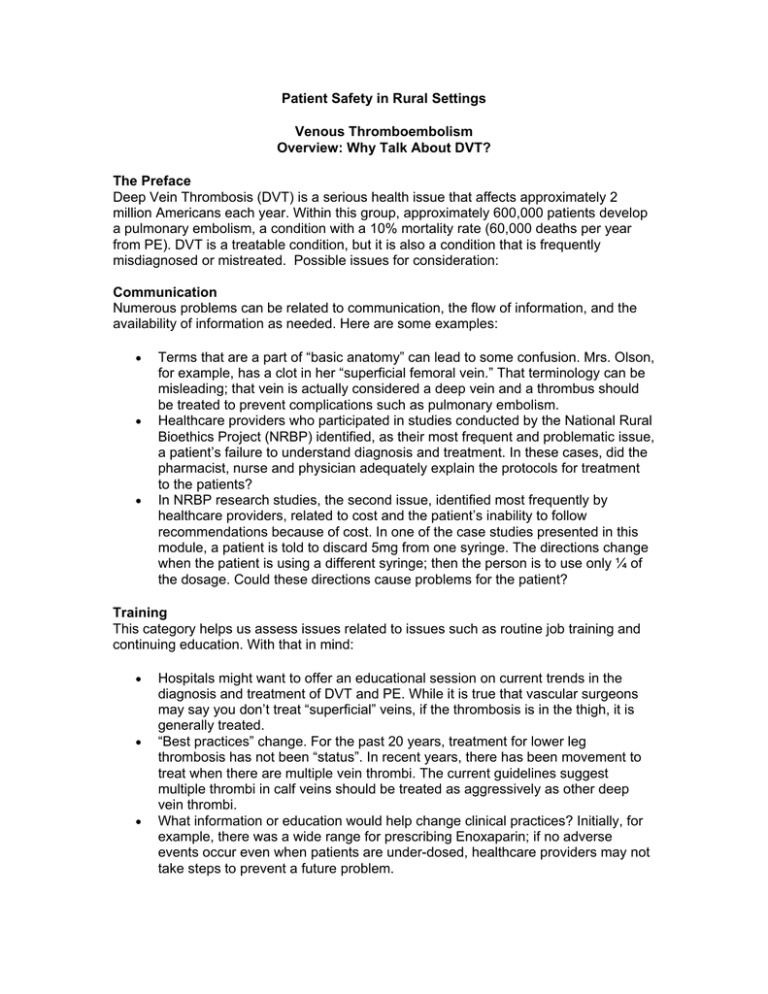
Patient Safety in Rural Settings Venous Thromboembolism Overview: Why Talk About DVT? The Preface Deep Vein Thrombosis (DVT) is a serious health issue that affects approximately 2 million Americans each year. Within this group, approximately 600,000 patients develop a pulmonary embolism, a condition with a 10% mortality rate (60,000 deaths per year from PE). DVT is a treatable condition, but it is also a condition that is frequently misdiagnosed or mistreated. Possible issues for consideration: Communication Numerous problems can be related to communication, the flow of information, and the availability of information as needed. Here are some examples: • • • Terms that are a part of “basic anatomy” can lead to some confusion. Mrs. Olson, for example, has a clot in her “superficial femoral vein.” That terminology can be misleading; that vein is actually considered a deep vein and a thrombus should be treated to prevent complications such as pulmonary embolism. Healthcare providers who participated in studies conducted by the National Rural Bioethics Project (NRBP) identified, as their most frequent and problematic issue, a patient’s failure to understand diagnosis and treatment. In these cases, did the pharmacist, nurse and physician adequately explain the protocols for treatment to the patients? In NRBP research studies, the second issue, identified most frequently by healthcare providers, related to cost and the patient’s inability to follow recommendations because of cost. In one of the case studies presented in this module, a patient is told to discard 5mg from one syringe. The directions change when the patient is using a different syringe; then the person is to use only ¼ of the dosage. Could these directions cause problems for the patient? Training This category helps us assess issues related to issues such as routine job training and continuing education. With that in mind: • • • Hospitals might want to offer an educational session on current trends in the diagnosis and treatment of DVT and PE. While it is true that vascular surgeons may say you don’t treat “superficial” veins, if the thrombosis is in the thigh, it is generally treated. “Best practices” change. For the past 20 years, treatment for lower leg thrombosis has not been “status”. In recent years, there has been movement to treat when there are multiple vein thrombi. The current guidelines suggest multiple thrombi in calf veins should be treated as aggressively as other deep vein thrombi. What information or education would help change clinical practices? Initially, for example, there was a wide range for prescribing Enoxaparin; if no adverse events occur even when patients are under-dosed, healthcare providers may not take steps to prevent a future problem. • • • The nurse was trying to estimate weight for someone who has a significantly different body type and size than the nurse – compounding the inherent inaccuracy of estimated weights. The nurse may not have appreciated the importance of an accurate weight in determining the correct dosage of a drug like Enoxaparin. The pharmacist’s responsibility to counsel the patient in the use of medications should be considered. The failure to offer counsel could be a violation of OBRA ’90 laws and possibly state Board of Pharmacy regulations. Policies, procedures, rules Policies and procedures help us create plans for addressing risk and assigning responsibility. It may be relevant to consider some policy issues such as: • • • • • • • Institutional change around a reporting issue – some hospitals now suggest that duplex reports should replace the words “superficial femoral” and report the condition as a thrombosis of the deep system of the thigh or a deep thrombosis of the thigh. The use of the substitute language reinforces the idea that a deep vein is involved. The AHRQ guidelines discuss the use of prophylaxis. Should healthcare providers stratify the risks of DVT among hospitalized patients and treat when indicated? What treatment protocols should be followed? In urban areas, the standard of practice would be to check mid-therapy to make sure that patient is adequately, but not overly anti-coagulated. Is this standard used in rural areas? The hospital policy on obtaining accurate weights on all patients should be established/enforced. Some hospitals make this the responsibility of more than one person to insure it is done – i.e., the pharmacist and the nurse. Did the pharmacist make an error when giving a patient both 60 mg and 80 mg syringes? Did the pharmacist make an error when he told the patient to use only 1¼ of a syringe to finish the course of therapy? Enoxaparin is an expensive drug and waste is an issue. Fatigue/Scheduling Problems may develop because of scheduling, staffing issues or environmental distractions. • In the cases provided, the pharmacist did visit the patient when hospitalized and did not personally counsel the patient regarding the proper use of the syringes. Those issues should be discussed. For example, the issue of proper usage was important because the pharmacists gave different strengths of medication to obtain the proper dosage. A discussion with a hospital pharmacist may have been problematic since many rural hospitals do not have staff pharmacists. As a result, patients may not have much of an opportunity to check with a pharmacist. How can this kind of scheduling issue be resolved? Equipment/environment Issues in this category involve the environment and use and location of equipment. • • What threshold does the hospital use for ordering a sonogram? Rural hospitals face serious cost constraints; the cost of a medication like Enoxaparin may have interfered with the pharmacist’s ability to keep adequate supplies in stock. As a result, the pharmacist gave the patient both 80 mg and 60 mg syringes. Protective Factors These factors help us identify the proactive measures that might prevent problems. • • • The pharmacist might have separated or “rubber-banded” the 80mg and 60 mg syringes into different boxes or bundles to make it more obvious that the pharmacist gave the patient two different strengths in the syringes. The pharmacist should have informed the patient of the correct, ordered dosages, instructed the patient in the proper use of the medications, and then had the patient repeat back the instructions to ensure that the patient understood how the syringes were to be used. The failure to offer counsel could be a violation of OBRA ’90 laws and possibly state Board of Pharmacy regulations. The hospital could encourage healthcare staff to ask about treatment guidelines.

